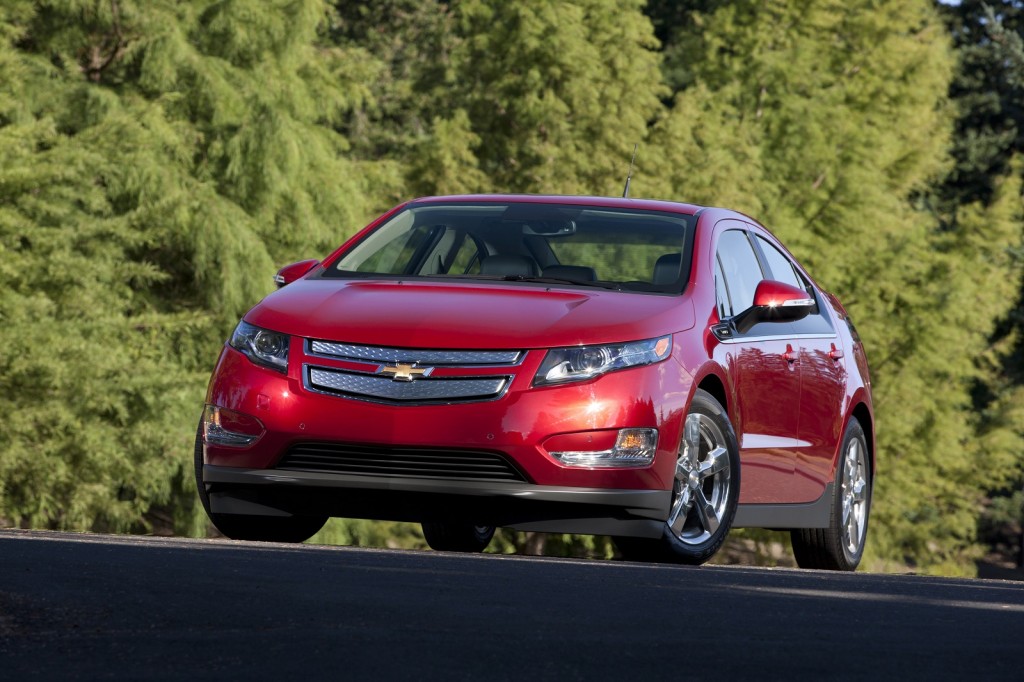With the anticipated launch of the revised 2016 Chevrolet Volt range-extended electric car now less than a year away, expectations are that it will be a compact hatchback similar to the current model.
Whether it has four or five seats remains up in the air, though the addition of a fifth seat would clearly bring more buyers than the current, somewhat snug four-seat model.
DON'T MISS: 2016 Chevrolet Volt To Launch Next Year: What We Know So Far

2014 Chevrolet Volt
The challenge in adding a fifth position lies in the Volt's current T-shaped battery pack, which fits inside a wide tunnel between the left and right sets of seats.
If the new 2016 Volt only has four seats, it would be at a capacity disadvantage against the Toyota Prius V, the Ford C-Max Hybrid and Energi models, and other high-mileage family five-seaters.
Forgotten concept
But there's a different alternative too: What if GM were to offer a second Volt model in a taller package that could seat five by putting the rear seat on top of the battery pack?
Such a vehicle was shown in China, as the Chevrolet Volt MPV5 Concept, back in 2010--and then it vanished from the auto-show circuit and hasn't been seen again.
That concept seated five and offered 30 cubic feet of cargo volume in a package larger than the existing Volt. While its 108.6-inch wheelbase was only 0.6 inches longer, the MPV5 Concept was 7 inches longer, almost 3 inches wider, and a full 7 inches taller than the five-door Volt now on sale.

2011 Chevrolet Volt MPV5 concept, Unveiled at 2010 Beijing Motor Show
That there may be more than one Volt is also supported by a Reuters article from two weeks ago.
That piece, however, suggested that the second model might be a less-expensive, lower-range Volt.
Significant spy shots?
Still, spy shots on Autoblog last July indicate that GM may well be developing a five-seat compact "tall hatchback" to compete with the Prius wagon and C-Max--but it may not use the Voltec powertrain. Instead, it could be a more conventional hybrid that doesn't plug in.
Those shots showed a development mule, using the company's existing Chevrolet Orlando compact tall people mover, testing a powertrain that included a high-voltage battery pack.
The test car doesn't, however, appear to have a charging port.
And using a smaller hybrid battery pack would eliminate the challenges of packaging a Volt-capacity battery while maintaining adequate cargo volume--an issue for which the Ford C-Max Energi plug-in hybrid has been slammed.
Built on Cruze underpinnings, the Orlando is sold in Canada and on other continents--but it was never brought to the U.S.

2011 Chevrolet Orlando
More compact models to come
GM's mass-market brand is developing multiple vehicles on an updated platform that was introduced at last week's Beijing Auto Show, in the form of an all-new Chevrolet Cruze compact sedan.
That car will arrive in the U.S. as a 2016 model, but its underpinnings will undoubtedly spawn several other vehicles--including the next generation of Orlando.
Compact tall hatchbacks like the Chevy Orlando and Ford C-Max are a very popular global segment, even if their U.S. sales aren't particularly stellar at the moment.
The puzzlement lies in a basic technology question: What hybrid system would GM use?
Full hybrid--from where?
To get truly notable gas-mileage ratings--40 mpg or more combined--it would have to be a full hybrid, not the company's eAssist mild hybrid.
And GM appears to have given up on downsizing its large, sophisticated, and brutally expensive Two-Mode Hybrid system designed for full-size SUVs and pickup trucks.
So is the company developing an all-new hybrid system, using elements of the Voltec powertrain and a smaller battery pack that doesn't plug in?
Given that it has a technology partnership with Honda on hydrogen fuel-cell vehicles--which contains language saying it could be extended to other technologies--might it be using Honda's new two-motor hybrid system, as seen in the 2014 Honda Accord Hybrid?
General Motors, predictably, declined to comment on any of the speculation.
_______________________________________________













